REVISE CODE 35/CHT C-2 IAC CHT ALL 82-89 W/IAC SYSTEM

VEHICLES AFFECTED: ALL 1982-89 W/IAC SYSTEM
This bulletin cancels and replaces Product Service Bulletins 88-628-118 and 88-628-143.
The improved diagnostic is a dynamic check of the Idle Air Control (IAC) system. This is accomplished by use of an IAC Tester kit. It includes an IAC driver and IAC node lights. The driver dynamically cycles the valve to see if it is capable of controlling rpm. Lack of rpm control could indicate a faulty valve or foreign material in the IAC passages. Since each engine is different, please consult the appropriate Service Manual for idle rpm information.
The node lights are a dynamic indicator of circuit function including ECM and connections. By varying engine rpm with the IAC driver, the ECM will activate the IAC circuits attempting to control rpm. As this occurs, each node light will be either red or green and will randomly alternate. The pattern will be different for each engine but what is important is that each light cycle red and green and never be "OFF."
The use of the tester kit and improved diagnostics represent a superior IAC testing procedure that will result in a high degree of user confidence. The tester positively concludes that the IAC system is either fully functional or faulty and if faulty whether it is the valve or the circuits. The tester kits can be ordered from Concept Technology, Inc. or Kent-Moore, Inc. Order forms are included with this bulletin.
This procedure and tester kit will work on all IAC equipped vehicles from 1982 through 1989. For 1990 and beyond, Tech I and Cams will develop diagnostics for the bi-directional ECM's (GMP4). Tech I will also require the node lights. For 1990 and beyond, non-bidirectional ECM's (GMCM) will continue to require this diagnostic procedure and tester kit.
CHART C-2 & CODE 35 IDLE AIR CONTROL (IAC) ALL VEHICLES
Circuit Description:
The ECM controls engine idle speed with the IAC valve. To increase idle speed, the ECM retracts the IAC valve pintle away from its seat, allowing more air to bypass the throttle bore. To decrease idle speed, it extends the IAC valve pintle towards its seat, reducing bypass air flow. A "Scan" tool will read the ECM commands to the IAC valve in counts. Higher the counts indicate more air bypass (higher idle). The lower the counts indicate less air is allowed to bypass (lower idle).
Test Description: Numbers below refer to circled numbers on the diagnostic chart.
1. The IAC tester is used to extend and retract the IAC valve. Valve movement is verified by an engine speed change. If no change in engine speed occurs, the valve can be retested when removed from the throttle body. Unless field service mode is used with 2.8L/3.1L speed density engines, incorrect IAC control will result.
2. This step checks the quality of the IAC movement in step 1. Between 700 rpm and about 1500 rpm, the engine speed should change smoothly with each flash of the tester light in both extend and retract. If the IAC valve is retracted beyond the control range (about 1500 rpm), it may take many flashes in the extend position before engine speed will begin to drop. This is normal on certain engines, fully extending IAC may cause engine stall. This maybe normal.
3. Steps 1 and 2 verified proper IAC valve operation while this step cheeks the IAC circuits. Each lamp on the node light should flash red and green while the IAC valve is cycled. While the sequence of color is not important if either light is "OFF" or does not flash red and green, check the circuits for faults, beginning with poor terminal contacts.
Diagnostic Aids:
A slow, unstable, or fast idle may be caused by a non-IAC system problem that cannot be overcome by the IAC valve. Out of control range IAC "Scan" tool counts will be above 60 if idle is too low, and zero counts id idle is too high. The following checks should be made to repair a non-IAC system problem:
Vacuum Leak (High Idle)
If idle is too high, stop the engine. Fully extend (low) IAC with tester.
Start engine. If idle speed is above 800 rpm, locate and correct vacuum leak including PCV system. Also check for binding of throttle blade or linkage.
System too lean (High Air/Fuel Ratio) ------------------------------------- The idle speed may be too high or too low. Engine speed may vary up and down and disconnecting the IAC valve does not help. Code 44 may be set. "Scan" 02 voltage will be less than 300 mV (.3 volts). Check for low regulated fuel pressure, water in the fuel or a restricted injector.
System too rich (Low Air/Fuel Ratio) ------------------------------------ The idle speed will be too low. "Scan" tool IAC counts will usually be above 80. System is obviously rich and may exhibit black smoke in exhaust.
"Scan" tool 02 VOltage will be fixed above 800 mV (.8 volt).
Check for high fuel pressure, leaking or sticking injector. Silicone contaminated 02 sensors "Scan" voltage will be slow to respond.
Throttle Body
Remove IAC valve and inspect bore for foreign material.
IAC Valve Electrical Connections
IAC valve connections should be carefully checked for proper contact.
PCV Valve
An incorrect or faulty PCV valve may result in an incorrect idle speed.
Refer to "Rough, Unstable, Incorrect Idle or Stalling" in "Symptoms," Section "B".
If intermittent poor driveability or idle symptoms are resolved by disconnecting the IAC, carefully, recheck connections, valve terminal resistance, or 1 replace IAC.
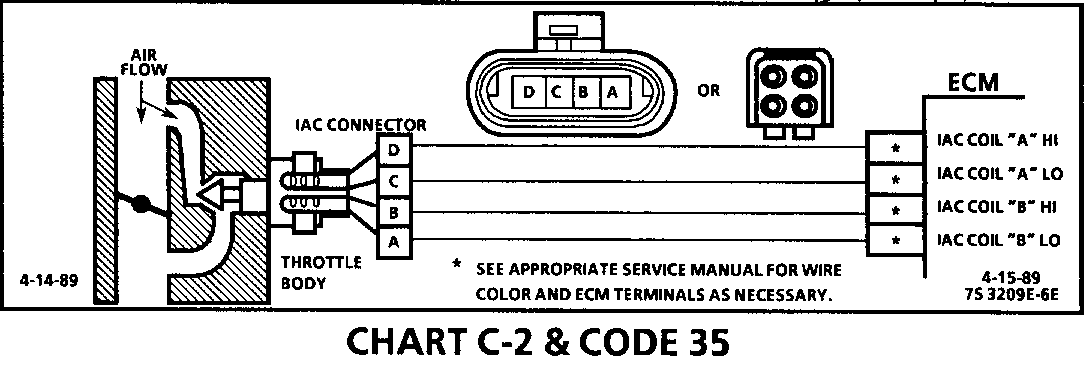
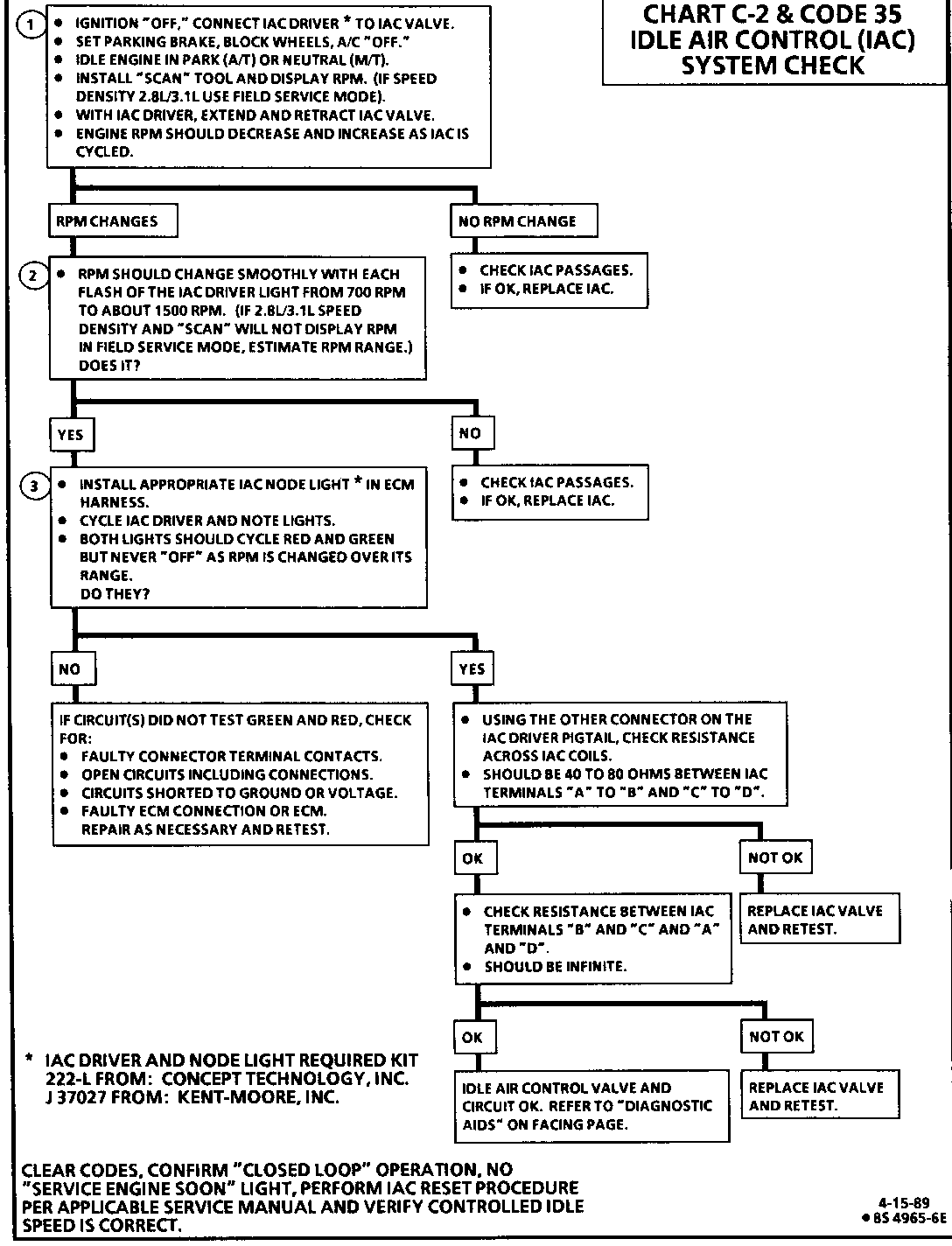
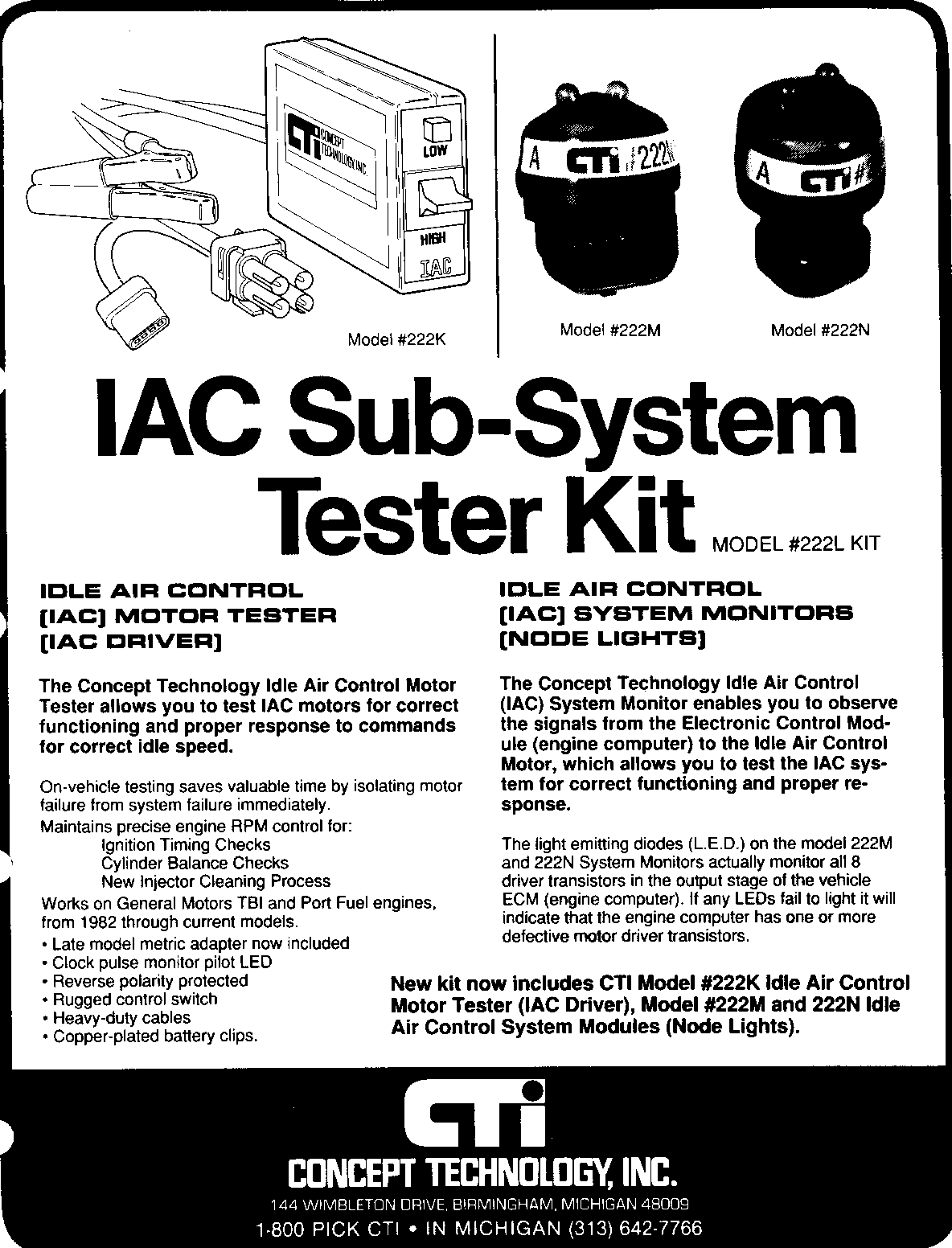
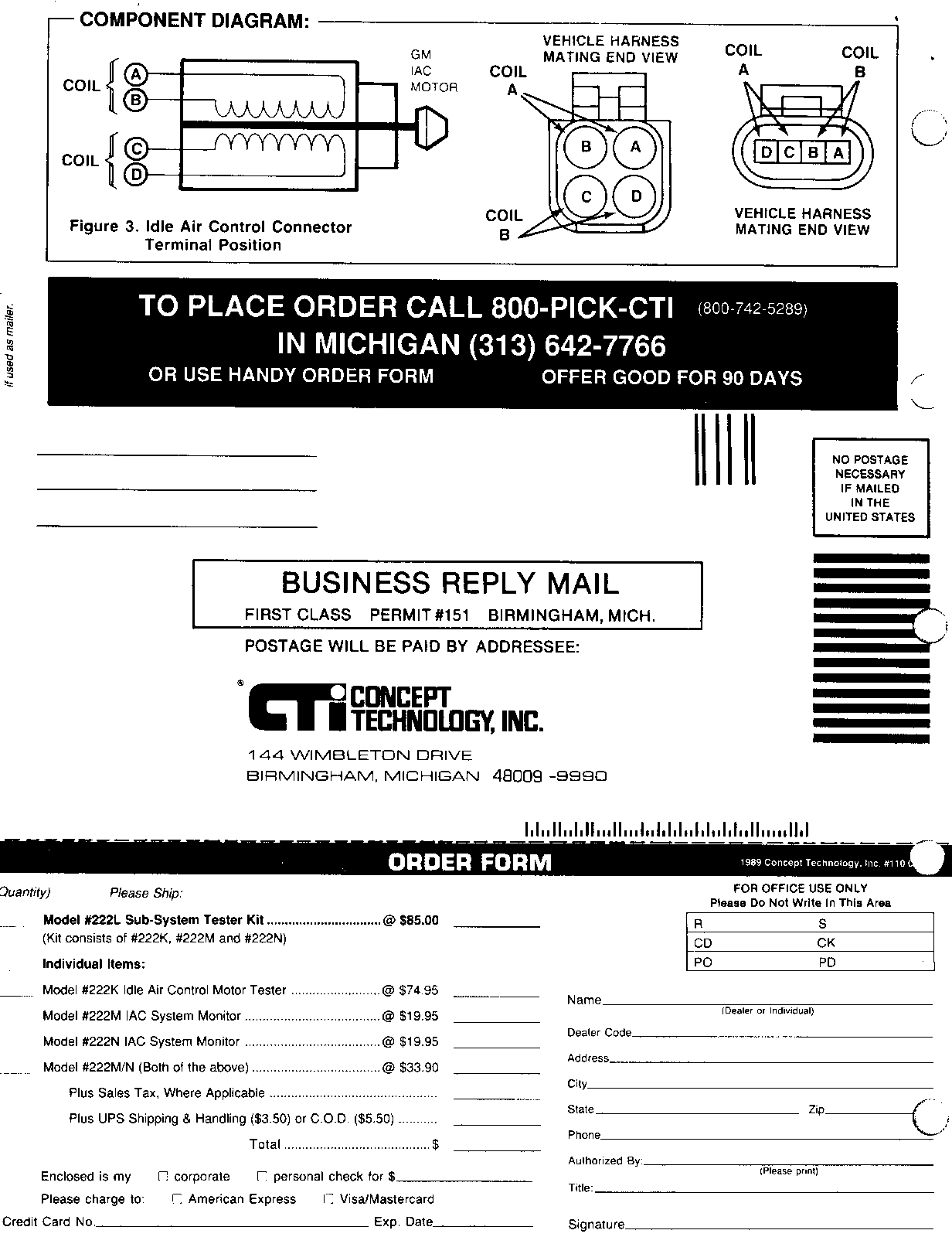
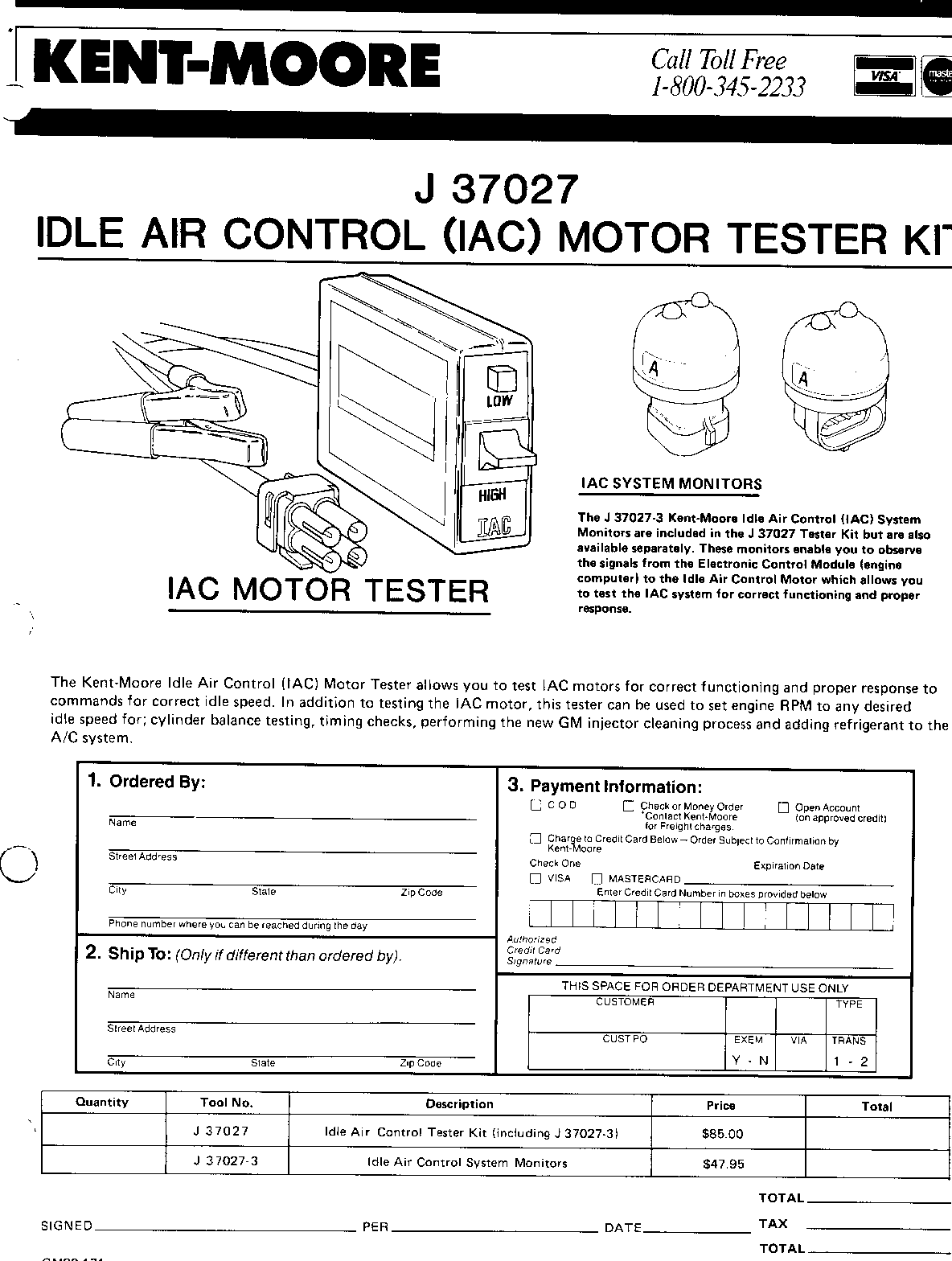
General Motors bulletins are intended for use by professional technicians, not a "do-it-yourselfer". They are written to inform those technicians of conditions that may occur on some vehicles, or to provide information that could assist in the proper service of a vehicle. Properly trained technicians have the equipment, tools, safety instructions and know-how to do a job properly and safely. If a condition is described, do not assume that the bulletin applies to your vehicle, or that your vehicle will have that condition. See a General Motors dealer servicing your brand of General Motors vehicle for information on whether your vehicle may benefit from the information.
